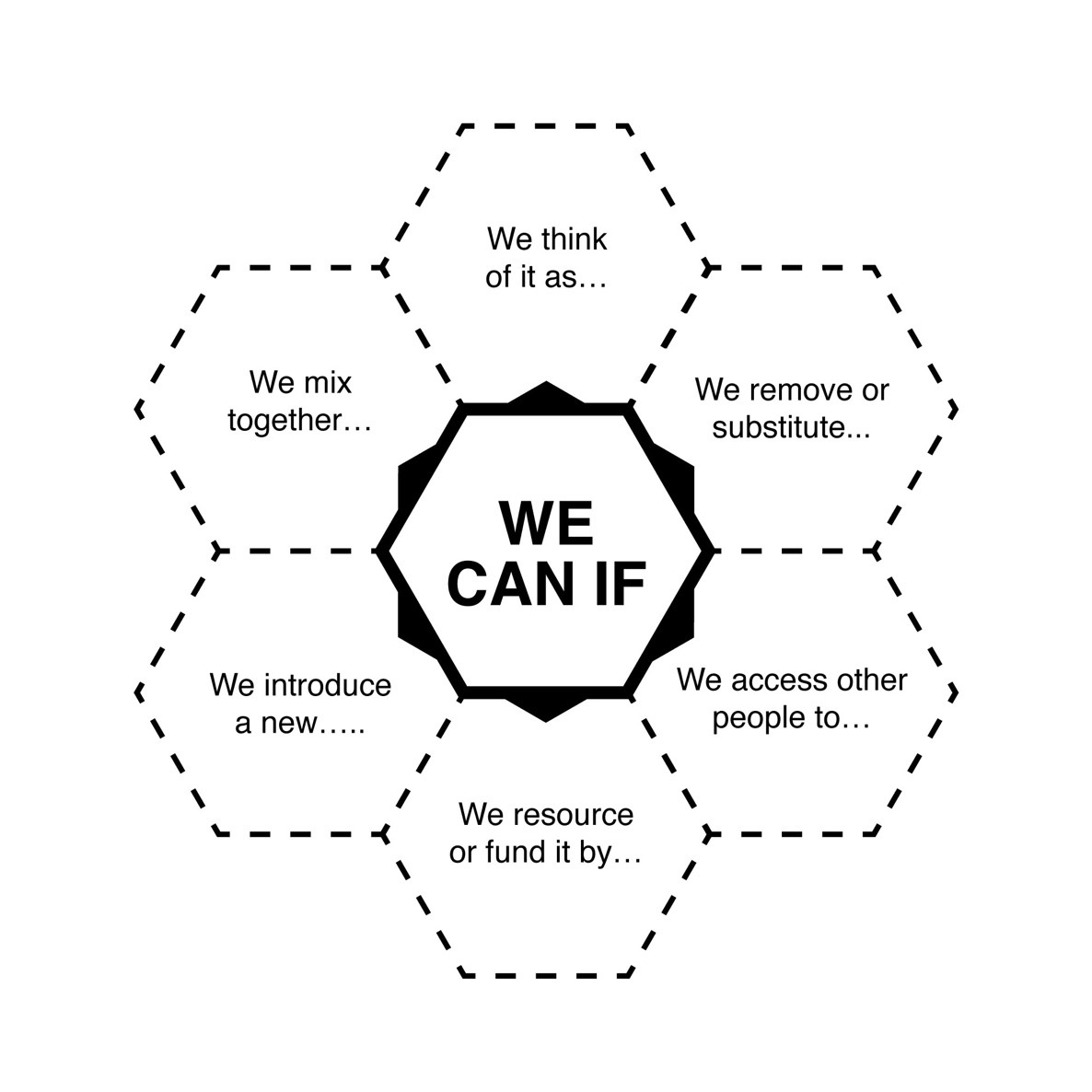Innovation is the lifeblood of growth in this fast-changing, unpredictable world. But it’s hard. All studies show that new product launches have a high failure rate, often as high as 95%.
So, how do you tip the odds in your favour? How can you create a climate where new ideas will thrive?
I believe there are 3 key ingredients.
1 It all starts with your mindset.
More specifically your attitude towards failure and risk. To generate game-changing ideas, you need to be brave, to push back against the barriers you’re up against, to stand up and stand strong. We call this the ‘transformer’ mindset, a desire to lead change and to work with the constraints and obstacles you’re facing rather than feeling overawed and oppressed by them.
But it’s not easy and it can take time and courage to adopt this transformer mindset.
Firstly, you have to develop the belief that breakthrough innovation is possible and indeed essential. I find it helps by looking for inspiration from your creative heroes – whoever they might be. Apple labelled these the ‘Crazy Ones’ back in 1997.
Ask yourself – what did they do? What can I learn from them?
Start to question and push back against your self-limiting beliefs and look for possibilities and new ways forward.
Secondly, you need to find the motivation. Seek out what you feel strongly about and use this to drive you. This could be an injustice you find unacceptable, a conventional wisdom you feel is outmoded, a problem you feel compelled to solve.
Once you’ve adopted the self belief and are fueled by the motivation, you’re in the right frame of mind to begin your creative journey.
2 Set yourself a clear and challenging ambition aligned to your significant constraint.
To provide focus and direction, you must set yourself an inspiring task, in order words a creative brief, one that excites you, one that forces you to think and act in ways that are radically different.
To do this, firstly, set out your ambition. Be as audacious and as provocative as you can. Here’s a few examples of brands with bold ambitions.
Google’s ‘Moonshot Factory’ asks itself some of the world’s most difficult questions, such as, how can we deliver the Internet to rural and unconnected places? Or how can we eliminate the diseases spread by mosquitoes?
Impossible Foods seeks to reduce the destructive impact of meat eating on our planet by creating alternatives using plants.
Its most famous invention is the Impossible Burger, which replicates the flavour, texture and sizzle of a classic burger.
Tony Chocolonely has the ambition of making chocolate ‘100% slave free’ by eliminating child slave labour on cocoa plantations.
Nike has the ambition of transforming society’s depictions and attitudes towards women in sport.

Set your stall. Set your ambition.
However, setting a brave ambition is not enough. You need to incorporate your biggest constraint within it.
This is important because it recognizes what you’re up against and forces you to lean into it – not ignore it. By facing up to your constraint, you’re obliged to seek out the alternative not the conventional – which after all what creativity is is all about
It also makes the challenge sharper and more intriguing, something our brain loves. The more restrictive the constraint, the more radical the solution needs to be. The constraint could a challenging timeframe, poor funding or zero expertise. Whatever it is, acknowledge it, select the most important one and align it with your ambition.
We call this a ‘Propelling Question’, where your bold ambition and your biggest constraint come together.
For example, Google’s Moonshot Factory sets itself the following Propelling Question.
‘How can we create 10x impact on the world’s most intractable problems, whilst operating with the speed and ambition of a startup?’
The Wellcome Trust is currently asking itself:
‘How can we boost our productivity and improve work-life balance whilst operating on a four day working week?’
AB Inbev has set itself a series of challenging sustainability ambitions. For example, one of its Propelling Questions is:
‘How can we ensure 100% of our purchased energy will be from renewable sources by 2025?’
Setting yourself a compelling, exciting challenge as a Propelling Question can cause a sharp intake of breath, but it’s the essential start point for powerful idea generation.
3 Adopt ‘Can-If Thinking’ to generate breakthrough ideas
So…having adopted a Transformer Mindset and armed with your Propelling Question, you can now move towards coming up with some provocative solutions. This is the creative bit, what we call ‘Can-If Thinking’. It’s an approach to idea generation that provides you with a series of creative springboards, forcing you to seek out brand new possibilities. It’s an approach that’s intuitive and powerful, perfect for brainstorming sessions in small teams.
To help we’ve provided a Can-If Map – see right. Simply place your Propelling Question at the centre of the Map and work your way around it, capturing ideas as you go. Our experience has shown that within a short space of time, you will have generated a whole series of new ideas, directions and possibilities that will provides answers to your Propelling Question.

Let’s explore one of the Can-If Springboards to demonstrate how it works.
We Can If…we access other people to…
This is all about accessing the time, expertise and creativity of people who you may never have thought about before to help solve your Propelling Question, people who may not be part of your organization or under your control.
For example, these could be people willing to volunteer their time to you for free. Parkrun has created the world’s biggest running community. To do so, it relies entirely on free volunteers who give up their time to organize, marshal the runs and update results.
These people could be your consumers. Starting back in 2009, Brewdog has created a community of 96 000 ‘Equity Punks’ to raise money for expansion and have an input in the direction of the business. So far it has raised over £69 million.
They could be brand ambassadors. Since 1997, Red Bull has employed students to represent and manage the Red Bull on campuses throughout the world and in return they gain professional work experience. Think laterally about who you could call upon to help. Think laterally about what you could offer in return.
So to sum up
Idea creation is based on three ingredients.
1 Adopting a Transformer Mindset
A mindset that ensures you and your team are feeling brave and motivated enough to challenge the existing order
2 Defining a ‘Propelling Question’
A creative brief that inspires you to act, aligning a powerful ambition with your most significant constraint
3 Adopting ‘Can-If’ Thinking to Answer Your Propelling Question
An approach that keeps optimism alive whilst generating breakthrough ideas. Innovation will always be challenging. Innovations will inevitably involve failure, but adopting these strategies will provide you with the foundation for success.
This piece was by London-based brand consultant Tony Franco. Follow him @tonyfranco
This article was taken from issue 1 of Marketing Society members-only publication EMPOWER. Find out more here and see past articles here (please note some articles are open to the public and some are for members only.)



